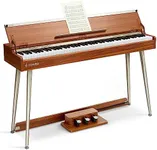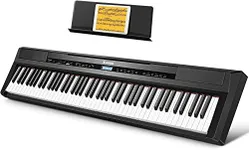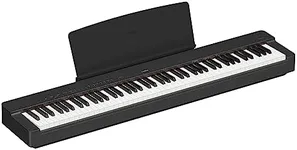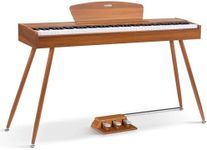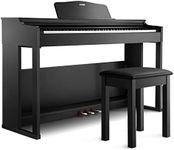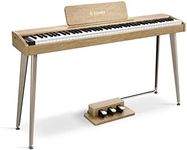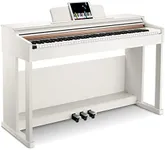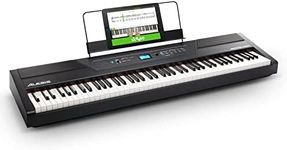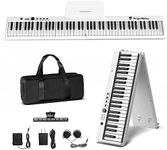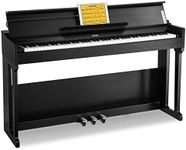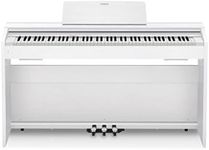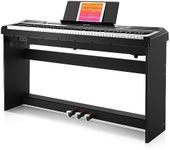Buying Guide for the Best Weighted Piano Keyboard
Choosing a weighted piano keyboard is an exciting step for anyone interested in learning or playing piano, whether you’re a beginner or an experienced musician. The main goal is to find an instrument that feels comfortable, suits your playing style, and helps you progress. When shopping for a weighted keyboard, it’s important to understand the key features that affect how the instrument feels and sounds. By focusing on these aspects, you can make a choice that matches your needs and supports your musical journey.Key Action (Weighted, Semi-Weighted, Hammer Action)Key action refers to how the keys respond when you press them, and it’s a crucial factor because it affects how realistic the keyboard feels compared to an acoustic piano. Weighted keys are designed to mimic the resistance of real piano keys, making them heavier to press, while semi-weighted keys are lighter and easier to play. Hammer action goes a step further by simulating the mechanism of a real piano, giving the most authentic feel. If you want a keyboard that closely resembles an acoustic piano, look for fully weighted or hammer action keys. If you prefer a lighter touch for easier play or portability, semi-weighted keys might be better. Your choice should depend on your playing goals: for classical or traditional piano practice, go for hammer action; for casual play or electronic music, semi-weighted may suffice.
Number of KeysThe number of keys determines the range of notes you can play. Full-size pianos have 88 keys, which allows you to play the widest variety of music. Some keyboards have 76, 61, or even fewer keys, making them lighter and more portable but limiting the range. If you plan to play classical pieces or want the full piano experience, 88 keys are ideal. For beginners, casual players, or those with limited space, fewer keys can be sufficient. Think about the type of music you want to play and how much space you have when deciding on the number of keys.
Touch SensitivityTouch sensitivity means the keyboard responds to how hard or soft you press the keys, producing louder or softer sounds accordingly. This feature is important for expressive playing and helps you develop proper technique. Some keyboards allow you to adjust the sensitivity or turn it off. If you want to learn dynamics and play expressively, make sure your keyboard has touch sensitivity. If you’re just starting out or only need basic functionality, this may be less critical, but it’s generally a good feature to have.
PolyphonyPolyphony is the number of notes the keyboard can play at the same time. Higher polyphony allows for more complex music, especially when using the sustain pedal or layering sounds. Entry-level keyboards may have 32 or 64-note polyphony, while more advanced models offer 128 or more. If you plan to play intricate pieces or use a lot of effects, look for higher polyphony. For simple practice or basic songs, lower polyphony is usually enough.
Portability and SizePortability refers to how easy it is to move and set up your keyboard. Larger, heavier keyboards with full-size keys and weighted action can be more challenging to transport, while smaller, lighter models are easier to carry but may sacrifice some features. If you need to move your keyboard often or have limited space, consider a more compact model. If it will stay in one place and you want the most authentic feel, a larger, heavier keyboard may be better.
Built-in Sounds and FeaturesMany keyboards come with a variety of built-in sounds, such as different piano tones, organs, and strings, as well as features like metronomes, recording, and lesson modes. These can make practice more enjoyable and versatile. If you want to experiment with different sounds or need practice tools, look for a keyboard with these features. If you only care about a realistic piano experience, you may not need many extras.
